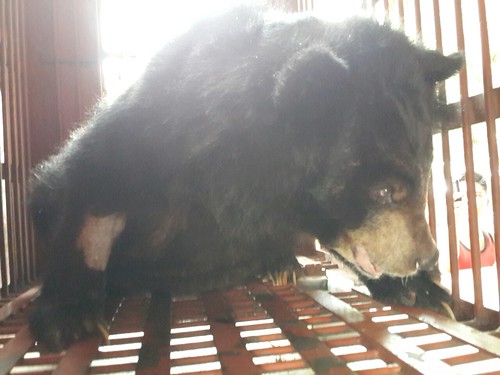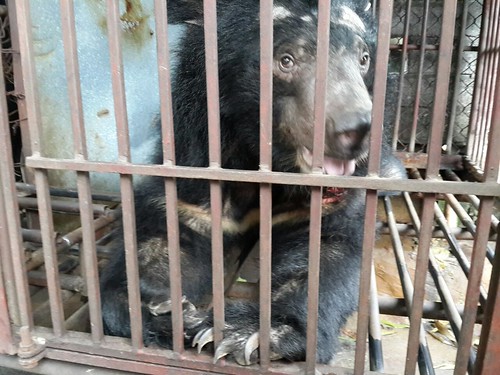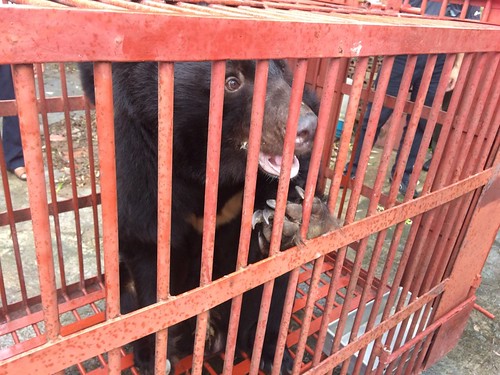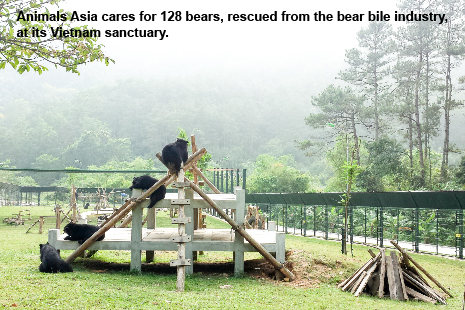| ||||||||||||||||
Translate
vrijdag 31 juli 2015
Emotionele oproep : Laat de dood van leeuw Cecil niet voor niets zijn ( petitie en video )
Nieuwsbericht van www.vier-voeters.nl
donderdag 30 juli 2015
6 zwanendrifters voor de rechter: De dierenbeulen verdienden 1.300 euro voor 1 geleewiekte zwaan ( video )
Onlangs werd bekend dat het Openbaar Ministerie twee zwanendrifters gaat vervolgen. Nu komen daar vier nieuwe verdachten bij. Zwanendrifters korten de vleugels van zwanen in, waarna de dieren niet meer kunnen vliegen. De Dierenbescherming verzet zich hier al jarenlang tegen.
De zes zwanendrifters die strafrechtelijke vervolging tegemoet zien, verhandelen al jaren zwanen. Ze leewieken de vleugels van de dieren, zodat de kleintjes die ze voortbrengen makkelijker gevangen kunnen worden om vervolgens te worden verkocht als sierzwanen of voor de slacht. Dit alles gebeurt op zeer brute wijze.
Veel geld
Zwanendrifters kunnen veel geld verdienen aan knobbelzwanen. In het buitenland wordt er vaak 1.300 euro voor een zwaan geboden en wel 2.200 euro voor een koppel. En als die markt verzadigd is, worden het vlees en de veren en het dons verkocht, aldus de Telegraaf.
Definitief einde
Nu het vanuit verschillende hoeken is gelukt om aan te tonen dat zwanendrifters inderdaad dieren mishandelen, wil staatssecretaris Dijksma er definitief een einde aan maken. “Dit zijn praktijken die niet door de beugel kunnen en een halt moeten worden toegeroepen,” zei ze eerder. Vanaf 2018 is leewieken helemaal verboden.
Lees hier onze eerdere berichtgeving over de zwanendrifters.
dinsdag 28 juli 2015
Vandaag de Internationale Dag van deTijger: aantal wilde tijgers gedaald van 100.000 naar 3.5000 ( video )
Nieuwsbericht van : www.vier-voeters.nl
Aantal wilde tijgers daalt terwijl soortgenoten lijden in gevangenschap
Amsterdam, 28 juli 2015 – Ter gelegenheid van de Internationale Dag van de Tijger op 29 juli vraagt VIER VOETERS aandacht voor de slechte wijze waarop deze zeer bedreigde diersoort in gevangenschap gehouden wordt. Hoewel tijgers wereldwijd worden beschermd door CITES1, is het aantal wilde tijgers in de afgelopen 100 jaar gedaald van ca. 100.000 naar slechts 3.000-3.500 dieren. Ondertussen leeft een veel groter aantal in gevangenschap, vele in zeer slechte omstandigheden.
Inez de Ligt, directeur VIER VOETERS Nederland: "De natuurlijke leefomgeving van de tijger wordt door toedoen van de mens steeds kleiner. Daarnaast vormt de illegale handel in lichaamsdelen van dode tijgers een belangrijke bedreiging. Drie ondersoorten zijn al uitgestorven.”
Onder het mom van entertainment (circussen), educatie (dierentuinen), geneeskunde (middeltjes gemaakt van tijgerbotten) en sport (trofeejacht) leven wereldwijd duizenden grote katachtigen in gevangenschap dan ook vaak een zeer ellendig bestaan. In Europa gaat het naar schatting om zo'n 2.000 tot 5.000 grote katachtigen.
Bij ‘canned hunting’ wordt vooral gedacht aan de plezierjacht op gefokte leeuwen die aan mensen gewend zijn en in omheind gebied worden doodgeschoten. Deze vorm van jagen biedt het dier geen enkele kans om te ontsnappen. In deze vorm kan echter ook op gefokte tijgers gejaagd worden. VIER VOETERS is met #VIERVOETERSgowild een campagne gestart tegen deze wrede vorm van jagen
.
VIER VOETERS biedt grote katachtigen een kans op een beter leven in het reservaat van de stichting in Zuid-Afrika. De meer dan 100 grote katachtigen die in LIONSROCK www.lionsrock.org een nieuw thuis gevonden hebben, krijgen hier een leefomgeving die voldoet aan hun natuurlijke behoeften. Dieren die nooit iets anders gekend hebben dan beton en tralies, kunnen hier rennen, zwemmen en klimmen.
http://www.felidabigcats.org/nl/felida/over-felida/ Video van Felida
Afgelopen mei heeft VIER VOETERS nog met succes zes tijgers van het Friese opvangcentrum FELIDA naar LIONSROCK gebracht. VIER VOETERS zet zich daarnaast met internationale campagnes in voor een verbod op canned hunting en het gebruik van wilde dieren in circussen.
40.000 handtekeningen overhandigd aan het Europees Parlement tegen de productie van foie gras ( Heftig video )
Deze e-mail kreeg vandaag binnen. Prima actie van www.peta.nl I
Beste Erna,
Bedankt voor het ondertekenen van onze petitie die het Europees Parlement verzoekt om het serveren van foie gras te verbieden in elke gebouw van het EU Parlement.
Uw naam is overhandigd aan President Martin Schulz samen met 40.000 namen van andere mensen overal in Europa, die de petities net als u ondertekend hebben. U heeft ons geholpen een daadkrachtig standpunt in te nemen door een verbod op foie gras te verzoeken vanwege de wreedheid die inherent is in de productie ervan.
Bekijk hier de foto's van het moment dat de petitie met handtekeningen werden overhandigd via PETA UK op de blog van PETA UK.
Nogmaals bedankt dat u zich heeft uitgesproken voor eenden! Bezoek PETA.nl om uit te vinden hoe u nog meer voor dieren kunt doen.
Met vriendelijke groet,
PETA Nederland
Ik deel graag de hele actie in het Engels met u
Five PETA supporters, representing Belgium, France, Germany, the Netherlands and the UK – delivered a petition today with more than 44,000 signatures calling on the European Parliament to ban serving foie gras at every EU Parliament building.
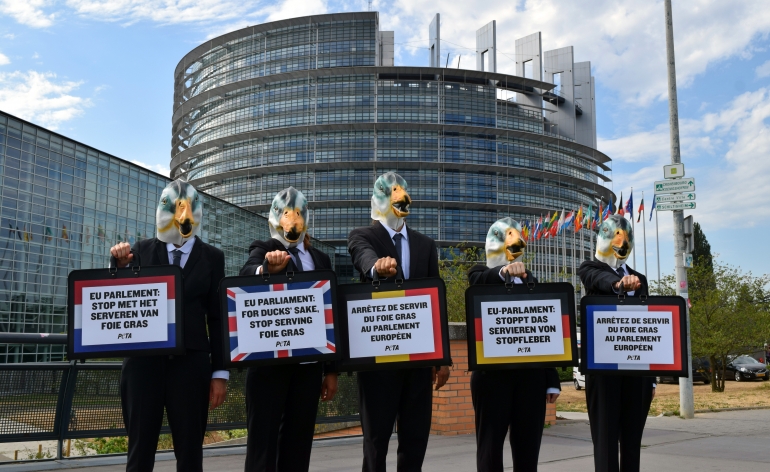

Kind people everywhere are opposed to force-feeding and sickening birds for foie gras, but Parliament buildings in Strasbourg and elsewhere refuse to stop serving this hideous dish.
No fewer than 44,349 supporters of PETA France, PETA Germany, PETA Netherlands and PETA UK joined with 36 MEPs in asking President Martin Schulz to ban foie gras because of the cruelty inherent in the industry.
During foie gras production, huge amounts of grain and fat are pumped into birds’ stomachs through pipes that are rammed down their throats several times a day. Their distended livers press against their lungs, making breathing difficult and causing them to pant constantly. This cruel procedure is illegal in the Czech Republic, Denmark, Finland, Germany, Italy, Norway, Poland and the UK, among other European countries.
Thank you to everyone who spoke out against this vile product and in behalf of tortured ducks and geese.
If you spot a restaurant, hotel or shop that still sells foie gras, please send the business a polite e-mail asking its owners to stop supporting cruelty. Do let us know when you’ve contacted a company – we’d love to hear how you get on!
And you can take action to help us get vile foie gras off British shelves:
zondag 26 juli 2015
Bijna 100 verwaarloosde dieren gevonden maar niet door de Dierenbescherming in beslag genomen Ra Ra hoe kan dat ?
Zo kennen we ze weer. Ik bedoel de Dierenbescherming. Vakantie en gemakshalve de dieren in de steek laten in hun eigen uitwerpselen laten stikken. Kale plekken in de vacht, niesziekte, geen drinkwater en nog -lees- meer ellende en die arme dieren nemen we niet in beslag??. Halo u bent toch de beschermer van dieren!! Of is dat niet meer zo? Gaan we lekker op onze luie reet zitten in de zon en verwaarloosde dieren vergeten?
Bijna honderd verwaarloosde dieren gevonden
25 juli 2015De Landelijke Inspectiedienst Dierenbescherming heeft op vrijdag 24 juli bij een fokker/handelaar in de Noord-Brabantse gemeente Reusel-De Mierden zo’n 71 honden en twintig katten in zwaar vervuilde verblijven aangetroffen. Ook de verzorging en gezondheid van de dieren lieten te wensen over.Na een melding van een zieke kitten, ging de inspecteur van onze LID samen met de dierenpolitie poolshoogte nemen bij de fokker/handelaar. Eenmaal op het adres werd al snel duidelijk dat er veel mis was. Er hing een penetrante ammoniaklucht, de kennels en hokken waren ernstig vervuild, lagen vol ontlasting en er was geen drinkwater. Ook staken er her en der scherpe delen uit de verblijven, waaraan de dieren zich konden verwonden.

Slecht verzorgd
Zowel de honden als de katten, waaronder ook pups en kittens, waren onvoldoende verzorgd. Een dierenarts stelde vast dat een aantal van de dieren last had van klitten, kale plekken en een vervilte vacht. Verder waren de nagels te lang en hadden sommige dieren bloed in de ontlasting. Enkele kittens kampten met niesziekte en ook de puppy’s waren niet in optimale conditie.
Situatie ter plekke verbeteren
Na overleg met RVO.nl* is bepaald dat het verstandiger was om de situatie van de dieren ter plekke te verbeteren dan om ze bij de fokker/handelaar weg te halen. Er wordt daarom een verbeterplan opgesteld, dat op zeer korte termijn dient te worden uitgevoerd. Zo moeten de verblijven worden schoongemaakt en schoongehouden, en de dieren worden behandeld door een dierenarts. De dierenpolitie maakt proces-verbaal op en de inspecteur van de LID zal er de komende tijd streng op toezien dat het verbeterplan wordt uitgevoerd
zaterdag 25 juli 2015
Dappere Buster de Cocker Spaniel die duizenden levens heeft gered voor de RAF is overleden
R.I.P
Dit is Buster, een Cocker Spaniel die duizenden levens heeft gered voor hij op 13-jarige leeftijd overleed. De speurhond ging in dienst van de Britse Royal Air Force naar Afghanistan, Irak en Bosnië en redde met zijn snuffeltalent "een ontelbaar aantal levens".
Later dit jaar organiseert het RAF een evenement om de speurhonden te eren.
vrijdag 24 juli 2015
Interessante stelling: Zeewier het nieuwe soja als we in 2050 negen miljard mensen willen voeden
TEXEL - De tuin van de toekomst ligt op zee. Zeewier moet uitgroeien tot het nieuwe soja als we in 2050 een wereldbevolking van negen miljard mensen willen voeden. Dat is de stellige overtuiging van de deelnemers aan het tweedaagse symposium Seagriculture, die heeft plaatsgevonden in Den Helder en op Texel.
Zeewier is betrekkelijk eenvoudig te telen, de plant leeft van meststoffen die in zee zijn opgelost, het zit barstensvol eiwitten, suikers en mineralen, en zeewier vangt ook nog eens CO2 af.
Wier is bruikbaar als voedsel voor mens en dier, maar ook voor toepassingen in de farmaceutische, chemische en cosmetische industrie. De schatkamer is er; nu is het de kunst om de goede sleutel te vinden voor een verantwoorde en kostendekkende exploitatie, luidde de conclusie van het symposium.
Zeewiersalade te koop bij AH
Initiatieven
Alleen al in Nederland zijn talloze initiatieven en voeren wetenschappers fundamenteel onderzoek uit naar de kweek en het gebruik van zeewier. Zeebouw gebruikt geen schaars zoet water, heeft geen bestrijdingsmiddelen nodig, groeit niet op kostbare landbouwgrond. Daarop staat de komende jaren steeds meer druk, door de groei van de wereldbevolking. De zee bedraagt 70 procent van het aardoppervlak en is nog amper ontgonnen.
Verhaal van Wilko Voordouw
http://binnenland.nieuwsbreak.nl/binnenland-nieuws/nieuwe-akker-ligt-op-zee/7754809
Wier is bruikbaar als voedsel voor mens en dier, maar ook voor toepassingen in de farmaceutische, chemische en cosmetische industrie. De schatkamer is er; nu is het de kunst om de goede sleutel te vinden voor een verantwoorde en kostendekkende exploitatie, luidde de conclusie van het symposium.
Initiatieven
Alleen al in Nederland zijn talloze initiatieven en voeren wetenschappers fundamenteel onderzoek uit naar de kweek en het gebruik van zeewier. Zeebouw gebruikt geen schaars zoet water, heeft geen bestrijdingsmiddelen nodig, groeit niet op kostbare landbouwgrond. Daarop staat de komende jaren steeds meer druk, door de groei van de wereldbevolking. De zee bedraagt 70 procent van het aardoppervlak en is nog amper ontgonnen.
Verhaal van Wilko Voordouw
http://binnenland.nieuwsbreak.nl/binnenland-nieuws/nieuwe-akker-ligt-op-zee/7754809
donderdag 23 juli 2015
Jaarlijks 130.000 zeeschildpadden gevangen in visnetten en drijvend afval in de Middellandse Zee ( video )
In het Italiaanse Manfredonia is een reddings centrum voor zeeschildpadden opgericht. Jaarlijks worden er zo'n 130.000 schildpadden per ongeluk gevangen door vissers in de Middellandse Zee, waardoor sommige soorten met uitsterven worden bedreigd.
Niet alleen het vast komen te zitten in de visnetten is een probleem. Ook drijvend afval in de zee is slecht voor de gezondheid van de schildpadden. Het reddingscentrum verzorgt de dieren en laat ze vervolgens weer vrij als ze zijn aangesterkt.
Eigen archief
woensdag 22 juli 2015
Honden bieden aan ambassades in Den Haag 83.000 handtekeningen tegen 'puppyfabrieken'
De verwerpelijke hondenfokkerij.....broodfokkers
Een groep honden biedt aanstaande vrijdag met World Animal Protection ruim 83.000 handtekeningen aan tegen ‘puppyfabrieken’ in Europa. Dat gebeurt onder andere bij de Duitse, Franse en Poolse ambassade in Den Haag. De internationale dierenbeschermingsorganisatie wil dat er een einde komt aan de vele misstanden bij de grootschalige Europese handel in honden. Europese regelgeving is daarvoor essentieel.
De ruim 83.000 handtekeningen werden gezet op de actiewebsite www.fokoff.nl. Directeur Pascal de Smit van World Animal Protection trekt aanstaande vrijdag 24 juli om 11.00 uur samen met de honden en hun baasjes langs de ambassades om aandacht te vragen voor het aanhoudende hondenleed in Europa. De landen die de petitie nu krijgen aangeboden spelen in de aanpak hiervan een sleutelrol.
Vertegenwoordigers van de media zijn uiteraard van harte welkom om aanwezig te zijn bij de overhandiging. De tocht langs de ambassades start om 11.00 uur bij de groenstrook tegenover Groot Hertoginnelaan 18-20 in Den Haag.
www.worldanimalprotection.nl
www.worldanimalprotection.nl
dinsdag 21 juli 2015
Oh wat schattig: Musje Toobie ( to be or not to be ) kan de weide wereld weer in....
Een kleine mus van slechts 3 tot 4 dagen oud kwam begin juli binnen bij de Huismusbescherming. Het vogeltje had een gebroken dijbeentje, zonverbrande huid en was uitgedroogd, maar heeft inmiddels een complete metamorfose doorgemaakt. Nog heel even en Toobie (to be or not to be) kan de wijde wereld in.
Toobie werd gevonden in de omgeving van Zwolle. De vindsters probeerden hem onder te brengen bij een vogelopvang, maar dit lukte niet.
Liset Karman van de Huismusbescherming:
“Ze kregen bij een dierenarts en vogelopvang, aan de telefoon al, te horen dat het geen nut had het dier te brengen, omdat het binnen twee dagen dood zou zijn. Dat is een bericht dat in Nederland door meerdere dierenambulances, dierenartsen en vogelopvangcentra gegeven wordt. Mensen geloven dat en laten zo’n diertje vaak dan maar sterven.”De dames die het hulpbehoevende huismusje vonden zochten gelukkig verder en kwamen terecht bij de Huismusbescherming. Liset documenteert Toobies voortgang op de Facebookpagina van Stichting Witte Mus/Huismusbescherming Nederland, waarop te zien is hoe het musje met sprongen vooruit gaat dankzij de goede zorgen.
“Ik wil aantonen dat zo’n kleine huismus nog wel te redden is. En het is ook heel erg de moeite waard.”Inmiddels is Toobie bijna zo ver dat hij gaat uitvliegen. Wil je zien hoe het hem vergaat? Volg dan deze Facebookpagina.
Met dank aan : www.piepvandaag.nl
zondag 19 juli 2015
Uniek: Ex-stopers, boeddhistische monniken en natuuractivisten zetten samen bedreigde schildpadden uit ( video )
Buddhist monks blessed 21 endangered southern river terrapins before they were released to their native river. (Photo: Courtesy Allan Michaud/WCS)
A freshwater turtle that was once all but extinct has a new lease on survival.
On Monday, 21 captive-raised southern river terrapins slipped into their native habitat: the gray-green waters of the Sre Ambel River system in southwest Cambodia.
The release was made shortly after more than 150 villagers, government officials, conservation workers, and monks held “a traditional ceremony in a nearby village to bestow blessings on the terrapins for their survival and reproduction,” according to a statement from the Wildlife Conservation Society.
These were the first turtles to be released as part of an ambitious international collaboration to save the species from extinction, said Brian Horne, WCS coordinator of freshwater turtle and tortoise programs. Horne has made upwards of 20 trips to Cambodia in the past five years to advise the program.
The project pays former egg collectors to monitor and protect turtle nests instead while a facility in the town of Sre Ambel raises turtle hatchings in captivity. There, the the vulnerable baby turtles can grow toward adulthood safe from hungry birds, lizards, and other predators, as well as entangling fishing nets and lines.
RELATED: Slow and Steady Gains for a Turtle That’s Hoping to Beat Extinction
“We hope to continue to do this for the next several years at least,” Horne said. “These turtles that were released are six to seven years old, and we don’t know exactly when they’ll reach sexual maturity. So we hope to monitor the population and increase the number of turtles that we release.”
Southern river terrapins are being raised in captivity in Thailand and Singapore as well, said Horne, “because the population is quite small, [and] there’s always the potential of a catastrophic event that could kill all the animals, such as a typhoon.”
The participation of religious leaders has helped increase local support for saving the southern river terrapins.
“In Cambodian society, Buddhism is a very important part of the culture, and monks are revered and respected,” Horne said. “So when the local monks join in and say, ‘Don’t go out and harm these turtles,’ generally people listen.”
So, Why Should You Care?
Southern river terrapins were nearly driven extinct by overexploitation for their eggs and meat. The basis of this entire restoration effort is a small population that turned up in the Sre Ambel River system only 15 years ago. “Our best guess is that there are three to five nesting females in the wild,” said Horne, making the southern river terrapin one of the world’s most critically endangered freshwater turtle species. “It really is one of the most rare turtles. That’s why we’re putting so much effort into it.”
Before being overhunted, southern river terrapins were the largest herbivores in the river system, Horne said, and crucial to its ecological vitality. “Large herbivores are important to nutrient cycling, which goes to the health of the whole ecosystem and the food web. There is some evidence that they help with seed dispersal and that they shape the plant community as they graze and feed.”
In Cambodian culture, the southern river terrapin is also called the “royal turtle,” said Horne, “long decreed as the property of the king. It’s a national symbol, and so we’re trying to bring back this national symbol for the people.”
The release was made shortly after more than 150 villagers, government officials, conservation workers, and monks held “a traditional ceremony in a nearby village to bestow blessings on the terrapins for their survival and reproduction,” according to a statement from the Wildlife Conservation Society.
These were the first turtles to be released as part of an ambitious international collaboration to save the species from extinction, said Brian Horne, WCS coordinator of freshwater turtle and tortoise programs. Horne has made upwards of 20 trips to Cambodia in the past five years to advise the program.
The project pays former egg collectors to monitor and protect turtle nests instead while a facility in the town of Sre Ambel raises turtle hatchings in captivity. There, the the vulnerable baby turtles can grow toward adulthood safe from hungry birds, lizards, and other predators, as well as entangling fishing nets and lines.
RELATED: Slow and Steady Gains for a Turtle That’s Hoping to Beat Extinction
“We hope to continue to do this for the next several years at least,” Horne said. “These turtles that were released are six to seven years old, and we don’t know exactly when they’ll reach sexual maturity. So we hope to monitor the population and increase the number of turtles that we release.”
Southern river terrapins are being raised in captivity in Thailand and Singapore as well, said Horne, “because the population is quite small, [and] there’s always the potential of a catastrophic event that could kill all the animals, such as a typhoon.”
The participation of religious leaders has helped increase local support for saving the southern river terrapins.
“In Cambodian society, Buddhism is a very important part of the culture, and monks are revered and respected,” Horne said. “So when the local monks join in and say, ‘Don’t go out and harm these turtles,’ generally people listen.”
So, Why Should You Care?
Southern river terrapins were nearly driven extinct by overexploitation for their eggs and meat. The basis of this entire restoration effort is a small population that turned up in the Sre Ambel River system only 15 years ago. “Our best guess is that there are three to five nesting females in the wild,” said Horne, making the southern river terrapin one of the world’s most critically endangered freshwater turtle species. “It really is one of the most rare turtles. That’s why we’re putting so much effort into it.”
Before being overhunted, southern river terrapins were the largest herbivores in the river system, Horne said, and crucial to its ecological vitality. “Large herbivores are important to nutrient cycling, which goes to the health of the whole ecosystem and the food web. There is some evidence that they help with seed dispersal and that they shape the plant community as they graze and feed.”
In Cambodian culture, the southern river terrapin is also called the “royal turtle,” said Horne, “long decreed as the property of the king. It’s a national symbol, and so we’re trying to bring back this national symbol for the people.”
zaterdag 18 juli 2015
13 honden vastgebonden aan een paal waarvan sommigen nog maar enkele dagen oud
Maandagnacht werd Dierenbescherming Rijnmond gebeld dat er honden aan een paal waren vastgebonden bij een flat in Rotterdam. Ter plaatse zagen de medewerkers van de dierenambulance dat een aantal omstanders jonge hondjes onder hun jas had genomen. De mensen probeerden met hun lichaamswarmte de pups op temperatuur te houden. Het bleken hondjes van slechts enkele dagen oud te zijn.
Een volwassen reu, een jongere hond en een moederhond met maar liefst tien pups waren voor de flat gedumpt. De dierenambulance schakelde direct de politie in. De agenten kwamen er al snel achter dat de eigenaresse tussen het publiek stond en spraken haar aan. Problemen in de relationele sfeer hadden ertoe geleid dat zij bij haar moeder aan de Einsteinplaats was ingetrokken. De ex van de vrouw liet zijn ongenoegen blijken door alle honden die zij had voor de flat te dumpen.

De honden van het ras Cane Corso zijn overgebracht naar een dierenopvangcentrum. Hier krijgen ze alle medische verzorging die ze nodig hebben. Later worden ze naar een gastgezin worden overgebracht. De honden en pups zijn voorlopig nog niet klaar voor adoptie. De politie zal later nog een onderzoek starten.
Een volwassen reu, een jongere hond en een moederhond met maar liefst tien pups waren voor de flat gedumpt. De dierenambulance schakelde direct de politie in. De agenten kwamen er al snel achter dat de eigenaresse tussen het publiek stond en spraken haar aan. Problemen in de relationele sfeer hadden ertoe geleid dat zij bij haar moeder aan de Einsteinplaats was ingetrokken. De ex van de vrouw liet zijn ongenoegen blijken door alle honden die zij had voor de flat te dumpen.

De honden van het ras Cane Corso zijn overgebracht naar een dierenopvangcentrum. Hier krijgen ze alle medische verzorging die ze nodig hebben. Later worden ze naar een gastgezin worden overgebracht. De honden en pups zijn voorlopig nog niet klaar voor adoptie. De politie zal later nog een onderzoek starten.
vrijdag 17 juli 2015
Verzwakt beertje in nood springt na 4 dagen in rubberboot en die sprong werd zijn redding ( video )
Het door zijn moeder verlaten Amerikaanse zwarte beertje werd al vier dagenlang gezien door langsvarenden, aan de oever van de Nolichucky river in de Amerikaanse staat Tennessee. Door al die langsvarende rafters raakte het beertje langzaam maar zeker gewend aan mensen.
Op de vierde dag naderde Danny Allen van High Mountain Expeditions, met zijn rubberboot , de oever waar het beertje zich bevond. Met zijn laatste krachten nam het beertje een enorme sprong, en belandde in de boot van Allen. Deze sprong werd zijn redding. Nadat het diertje aan land werd gebracht, werd het jong opgenomen door een berenopvangcentrum in Townsend. Hier mag het op krachten komen.
Het beertje heeft inmiddels de naam ‘Noli’ gekregen, naar de rivier waar het beestje werd gevonden. Hoogstwaarschijnlijk wordt Noli tussen augustus en december weer in het wild uitgezet.
Bron: www.piepvandaag.nl
Goed zo: Circusolifanten in de zee losgelaten om af te koelen nemen wraak als de dompteur hun treitert ( video )
https://www.dr.dk/nyheder/indland/billeder-elefanter-skabte-kaos-ved-dansk-strand
Na een warme dag in Denemarken werden drie circusolifanten losgelaten in de zee om af te koelen. Dat ging prima, totdat eentje tijdens de tocht terug naar hun verblijf werd geslagen door een verzorger. De drie dieren gingen daarop door het lint.
Enkele honderden mensen hadden zich verzameld om de olifanten van Cirkus Arena te bekijken. Na een tijdje werden de dieren weggeleid. Een verzorger sloeg één van hen met een stok om hem vooruit te krijgen. De olifanten liepen daarop buiten de omheining van het circus. De toeschouwers schrokken. "Maar niet heel erg", zegt één van hen in de Deense media.Op beelden gemaakt door een toekijker is te zien hoe de dieren paniekerig rondlopen. Voordat de verzorgers ze weer rustig kreeg, rende één van de olifanten hard op een geparkeerde auto af en tilde die met een slagtand omhoog en beukte er een paar keer tegenaan. Het personeel kreeg de boel kort daarna weer onder controle.
ZIE OOK: Video: Olifanten in Japan krijgen zwembad
http://www.rtlnieuws.nl/nieuws/opmerkelijk/video-olifanten-japan-krijgen-zwembad
donderdag 16 juli 2015
'Bucket list' voor terminaal zieke reddingshond Chester is een feestje geworden......
www.hln.be
Terminale kanker of niet, Nicole Elliot verloor enkele weken geleden haar hart aan deze schattige knaap. Ze plukte reddingshond Chester weg uit het asiel, vastbesloten als ze is om van zijn laatste dagen een onvergetelijk festijn te maken. De dierenvriend uit Columbus (Georgia) stelde niet alleen een indrukwekkende 'bucket list' op, ze maakte ook een Facebookpagina aan om de wereld te laten meegenieten van zijn dolle avonturen.
Wat een mooi diertje ! Zo parmant
The before and after of Chester after being saved from deathrow at the pound in Columbus. I want to thank Animal Ark Rescue for taking Chester and giving him a second chance at life. The people that work and volunteer at your facility made happiness possible for Chester and many other animals like him. I think it would be an awesome check off of his bucket list by asking anyone that may want to honor his life by Donating, volunteering, or adopting. They do amazing things for the unwanted animals in our community. Thanks again for giving me the opportunity to share Chester's last days with him!
"Ik probeer hem zo veel mogelijk te vertroetelen: zo genoot hij al van een autoritje met open ramen, kreeg hij een speciale hotdog, genoot hij van een verwendagje met verschillende hondenbaden en ging hij mee shoppen. We kwamen uiteindelijk thuis met een knus bed, bandana's, veel snoep en speeltjes. Het eten viel in de smaak, met zijn appetijt is duidelijk niets mis."
woensdag 15 juli 2015
Meer dan 76.000 euro opgehaald voor door brand verwoeste dierenopvang Norma’s Universum ( video )
Door Johanna Kommerie op 14 juli 2015 om 11:00, in de categorie Nieuws.
 De Stichting Dierenlot heeft na de verwoestende brand in dierenopvang Norma’s Universum in Ferwert al 76.693 euro ingezameld voor de getroffen dierenopvang. Norma Miedema, eigenaresse van de dierenopvang, leefde met tientallen dieren in een oude boerderij die op 7 juni jongstleden in vlammen opging. Daar kwamen tientallen dieren om het leven en raakten andere dieren gewond. De oorzaak van de brand is naar alle waarschijnlijk kortsluiting geweest.
De Stichting Dierenlot heeft na de verwoestende brand in dierenopvang Norma’s Universum in Ferwert al 76.693 euro ingezameld voor de getroffen dierenopvang. Norma Miedema, eigenaresse van de dierenopvang, leefde met tientallen dieren in een oude boerderij die op 7 juni jongstleden in vlammen opging. Daar kwamen tientallen dieren om het leven en raakten andere dieren gewond. De oorzaak van de brand is naar alle waarschijnlijk kortsluiting geweest.Foto: Norma Miedema
Er zijn plannen om een nieuw ‘Norma’s Universum’ op te zetten. Norma Miedema heeft met de Stichting Dierenlot afgesproken dat zodra duidelijk is wat de verzekering gaat uitkeren alle fondsen en gelden bij elkaar opgeteld worden en dat men dan gaat kijken hoe het nieuwe Norma’s Universum er precies uit gaat zien. Op haar Facebookpagina laat Norma weten: ‘Het lijkt te gaan lukken dat de dieren en ik en mijn levenswerk weer door kunnen gaan. Namens de dieren en mezelf ontzettend bedankt.’
Het is nog steeds mogelijk via Stichting Dierenlot geld te doneren voor Norma’s Universum. Dat kan via deze link: https://www.dier.nu/doneren/geef/.
maandag 13 juli 2015
16 doodsbange jonge vosjes gekidnapt om weer neergeknald te worden voor de jacht ( undercover video )
http://www.league.org.uk/who-we-are origineel bericht
Dankzij een undercover onderzoek van Britse dierenbeschermingsorganisatie werden onlangs 16 vossenjongen gevonden op het land van een jachtvereniging. De vosjes zaten opgesloten in een donkere schuur en kregen te eten van een medewerker van de Middleton Foxhounds jachtclub. Nadat de politie hiervan op de hoogte was gebracht, werden de vosjes in beslag genomen en op geheime locaties ondergebracht.
Dierenbeschermingsorganisatie the League Against Cruel Sports is ervan overtuigd dat het plan was de vossen op een later moment uit te zetten om er (illegaal) op te jagen. In de schuur waar de jongen werden aangetroffen waren geen ouderdieren aanwezig, wat erop wijst dat de jongen met geweld uit hun natuurlijke omgeving zijn geroofd. De ruimte was uitgerust met buizen om vossenholen na te bootsen. De organisatie waarschuwde de politie, die de vossen in beslag nam en een medewerker van de jachtvereniging arresteerde. Een van de dieren overleed kort hierna, met de andere dieren gaat het goed.
Toni Shepherd van the League Against Cruel Sports:
“Dit doet het argument dat jagen een vorm van ‘beheer’ is volledig teniet. Waarom zouden mensen die jagen vossen opgesloten houden? Het antwoord is simpel, maar vreselijk: ze vangen vossen om een stabiel aanbod te hebben van dieren om op te jagen. Het komt erop neer dat deze vossen gekidnapt waren voor wreedheid.”De vossenjacht is een vreselijke gebeurtenis. Ruiters en jachthonden achtervolgen een doodsbange vos tot deze uitgeput is en door de honden wordt verscheurd. Gelukkig zijn deze jonge vossen op tijd gered en is dit gruwelijke lot ze bespaard gebleven.
Bron ©PiepVandaag.nl Angelique Lagarde
zondag 12 juli 2015
' Lucky 13 ' beren uit de berengalindustrie eindelijk vrij !! ( heel veel foto's )
U bent het wel een beetje van mij gewend. Zondags plaats ik zoveel mogelijk goed nieuws en vertaal het niet. Reden is dat ik vooral vandaag bezoek krijg. Mijn partner is 79 geworden en de kleinzoon 2. De hele family en dat zijn er 13 personen komen vandaag bij mekaar om deze verjaardagen te vieren. Ik wens u allen een fijne zondag toe !! Groetjes, Erna
www.animalsasia.org
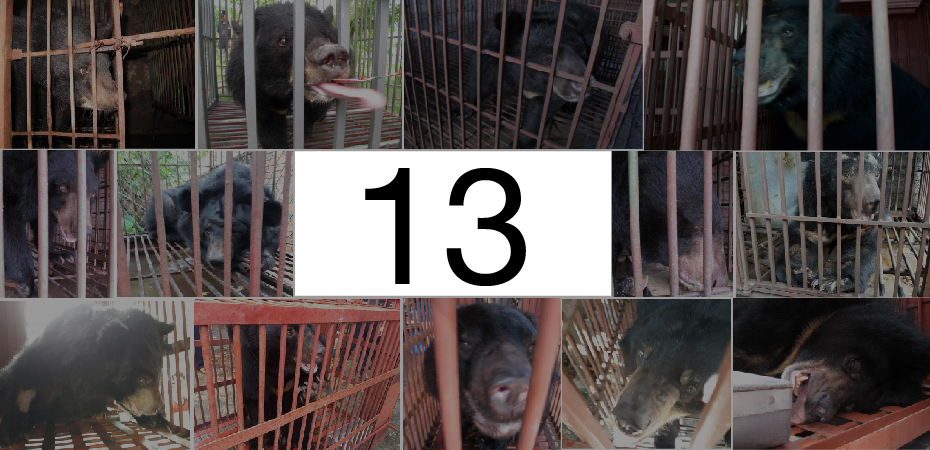
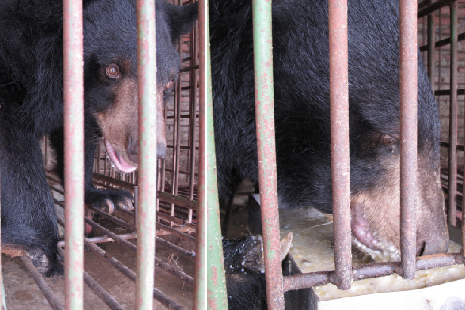
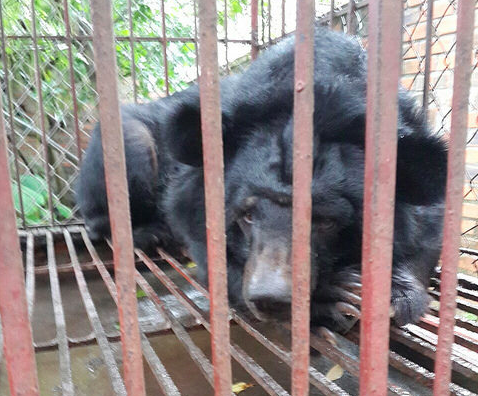
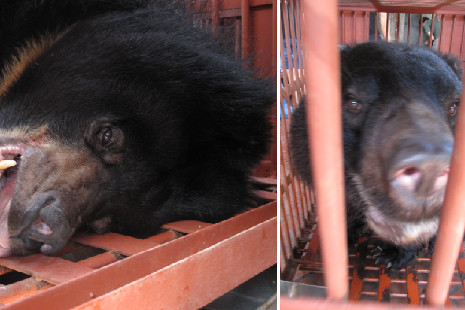
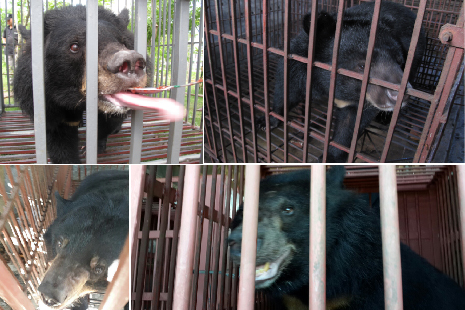
www.animalsasia.org
Rescued from bile farms - the "lucky 13" bears start rehabilitation

The “Lucky 13” moon bears rescued from bear bile farms by Animals Asia are beginning to settle well in their new home. Foto hieronder van een berengal farm
The bears, rescued from farms in Quang Ninh province during a mammoth four-day operation, are becoming accustomed to the Tam Dao rescue centre where they will be cared for and safe for the rest of their lives.
Supervisors at the sanctuary have already acted swiftly to treat a range of conditions among the bears, caused by their captive existence to date and lack of adequate care. This has included surgery to remove a toe, while another has severe cataracts which are being closely monitored. Several bears will need dental work to remove infected teeth, caused by poor diet and literally trying to chew their way out of cages.
The 13 are all settling in at different rates. Animals Asia’s priority is to make them comfortable and try to get them back to full health as quickly as possible as they see out their 45-day quarantine.
Here are Vietnam Bear Manager Sarah Dempsey’s updates on the “lucky 13”:

Cinnamon and Angelica
“Cinnamon and Angelica are both settling in well and we’re pleased to report these two both seem content. Cinnamon isn’t so keen on the carrots and tomatoes on her new menu but she loves the dog food she’s receiving. Conversely, Angelica leaves a lot of her dog food, instead polishing off every last morsel of sweet potato.”
Shanti
“Shanti was somewhat nervous and aggressive when she arrived at the centre. At first she just sat in the corner growling and lunging at anyone who got too close - we fear she was treated badly and naturally mistrusts people as a result. When she was rescued her health check revealed she has cataracts in both eyes which also partly explain her behaviour. We’ll assess the cataracts and see if we can operate to remove them and restore her sight. We hope that Shanti will see again.”
Cinta
“Cinta was rescued from the same farm as Shanti. He too was aggressive and nervous - and on his first full day at the centre was physically shaking with fear. Thankfully, he has grown in confidence and eats almost everything. He is naturally curious to play with toys and other items, and already he is a happier, more confident bear than when we rescued him.

Bao
“Bao was found in poor condition, suffering fur loss and thickened skin from rubbing her head against the cage bars. Her front right paw was missing three digits and an ultrasound showed injuries which suggests bile was extracted on many occasions. Little wonder she head sways a lot and so far has been aggressive towards staff and other bears, often letting out a low growl when staff are around or towards her neighbour Kujira.
Kujira
“Kujira was in poor health when rescued with many injuries. He has three broken teeth and his claws are badly overgrown. He was also very underweight so it is pleasing he is eating very well, only leaving tomatoes and carrot. He adores being showered and has a charming habit of trying to drink from the hosepipe.”
Gizmo
“Gizmo shows a huge appetite and is a calm easy-going bear.. Another shower-loving bear, he sits up at the bars whenever he sees staff with the hose. When they oblige with a spray, he rolls onto his back with his feet in the air so workers can spray his belly.

Sunny and Kane
“Sunny was the bear that presented the rescue team with one of the greatest challenges, as he was so nervous nothing would make him venture out from the cage. No amount of sweet treats - honey, strawberry jam, marshmallows, sugar cane and sweet milk - would do the trick and in the end had to be sedated. By contrast, perhaps tempted by seeing what was on offer, Sunny’s pal Kane took little persuasion. Both are settling in well at the rescue centre and are awaiting full medical checks.

Fluffy, Hatu, Bi Do and Lucky
“Fluffy and Hatu arrived on the morning for the final day and were joined that evening by Bi Do and Lucky. They are eating well and their new surroundings are still very new to them. The next steps for them will be to receive full health checks but so far we are confident they will feel settled before long. Bi Do in particular has settled more quickly, proving to be a calm and gentle bear that does not seem bothered at all by the presence of staff.
“Lucky needed surgery because her claws had grown so much they had curled round and pierced her foot. It has meant having to amputate one of her toes because of the extent of the damage. She is recovering well now and we look forward to seeing the difference that living without pain makes to her.”
zaterdag 11 juli 2015
Het is droevig gesteld: Weidegang zuivelproducten meestal vervuild met stalmelk
Het is droevig gesteld met de verkrijgbaarheid van zuivelproducten die uitsluitend zijn gemaakt van melk van koeien die in de wei hebben gelopen. De meeste producten, waaronder kaas, toetjes en boter, zijn volgens de Dierenbescherming 'vervuild' met stalmelk. Hoewel nog tegen de 70% van de koeien weidegang krijgt, wordt slechts een klein deel van de zuivel van deze koeien apart opgehaald en verwerkt tot weidezuivelproducten.
Uit het vandaag gepresenteerde rapport ‘Maak van de melkveehouderij geen vee-industrie' blijkt dat de keuze in de winkel beperkt is tot dagverse en biologische zuivelproducten. Directeur Frank Dales van de Dierenbescherming riep tijdens een bijeenkomst van de ondertekenaars van het Convenant Weidegang supermarkten en zuivelproducenten op hun aanbod koevriendelijkere zuivel snel te vergroten.
Weidemelk gescheiden ophalen
Dat kan bijvoorbeeld door alle weidemelk gescheiden op te halen en apart te verwerken tot weidezuivelproducten. De Dierenbescherming doet een dringend beroep op de zuivelproducenten om melk van koeien, die wel weidegang hebben gekregen, niet langer te mengen met stalmelk. Producten als margarine en boter, slagroom, allerlei toetjes en kaas zijn daardoor niet of nauwelijks verkrijgbaar als weidegangvariant. Eigenlijk is kaas het enige niet-dagverse zuivelproduct dat (zij het heel beperkt) ook verkrijgbaar is met weideganggarantie. Terwijl juist bij kaas veel winst valt te behalen. Ruim de helft van de Nederlandse melk wordt gebruikt om kaas van te maken. Voor één kilogram kaas is bijna tien liter melk nodig.
Abonneren op:
Posts (Atom)






























